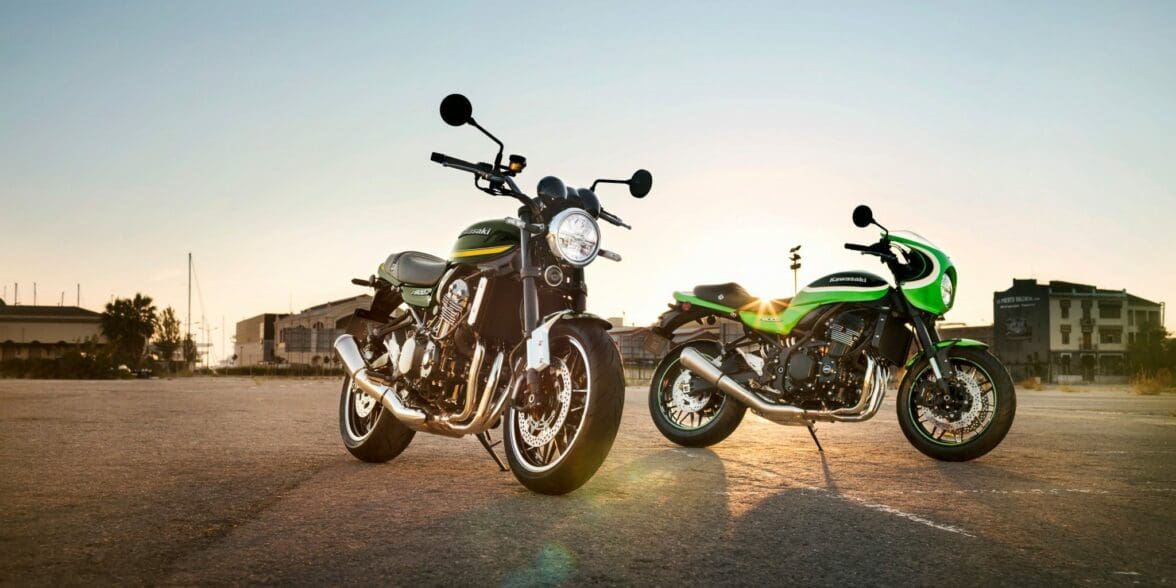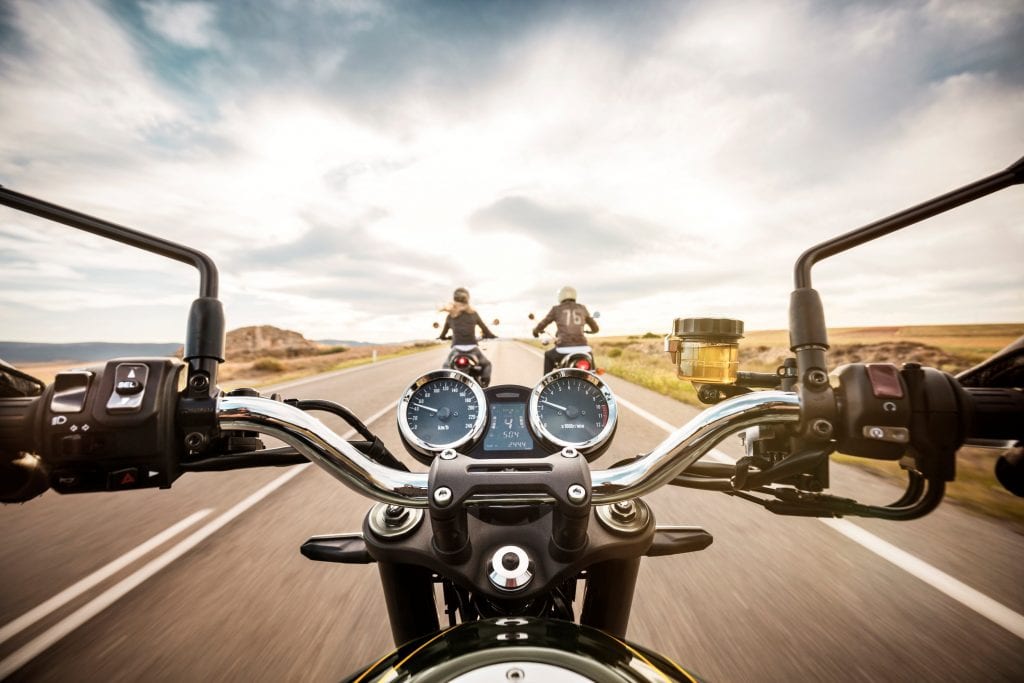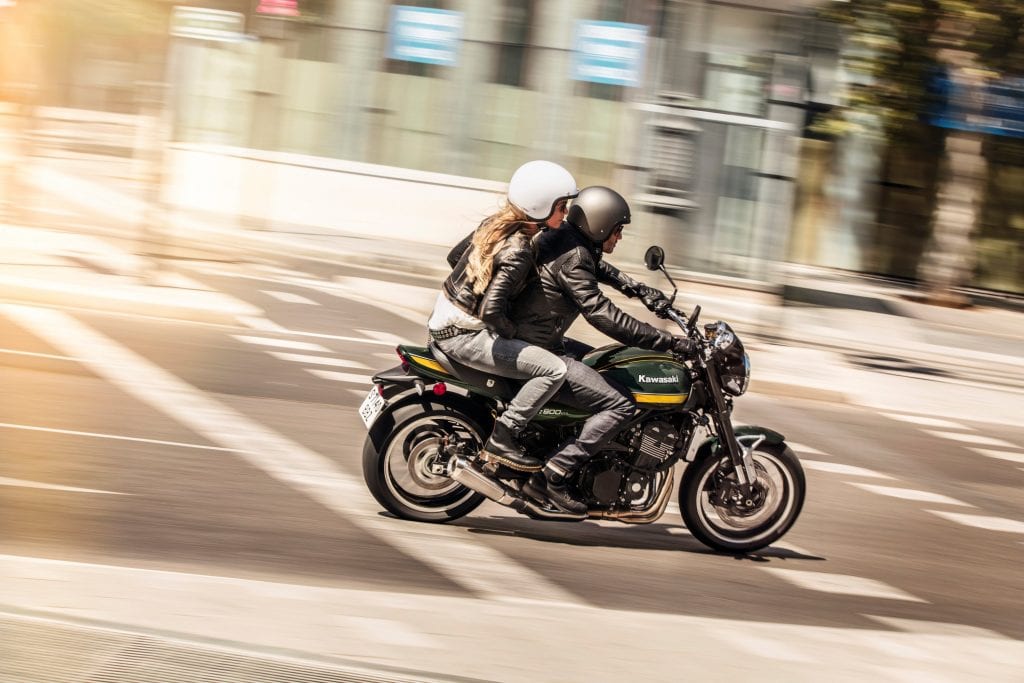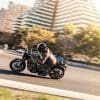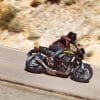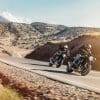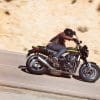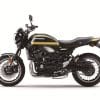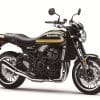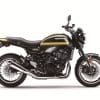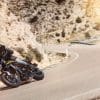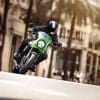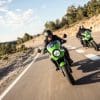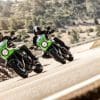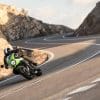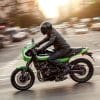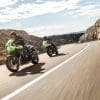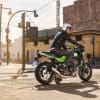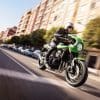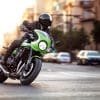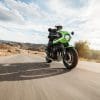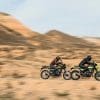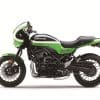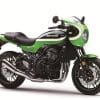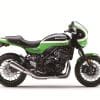2020 Kawasaki Z900RS & Z900RS Cafe
Contents
The 2020 Kawasaki Z900RS is a sport heritage motorcycle that is designed to evoke images of the original Z1 900 from the 1970s. Based on the standard Z900, the Z900RS is powered by a 948 cc DOHC liquid cooled inline 4 engine that is slightly detuned from the Z900, to 111 crank HP and 98.5 lbs-ft of crank torque. The biggest difference between the standard Z900 and the Z900RS comes from the RS initials: Retro Styling.
Instead of the sharp, aggressive, angular look, the Z900RS brings a smoother, more rounded, classic look forwards, as well as a modified frame that allows for the retro fuel tank and cowl to keep the lines of the bike clean. There is a variant model as well, the Z900RS Cafe, which replaces the front cowl with a rounded cafe racer cowl and windscreen, as well as raises the rear of the seat cushion to provide a backstop when you’re tucked close to the fuel tank. All models of the Z900 series come with ABS, traction control, and a slipper clutch for smooth rear end power delivery.
The 2020 Kawasaki Z900RS ABS starts at $11,199 US/$13,399 CA, with the 2020 Kawasaki Z900RS Cafe variant starting at $11,799 US/$13,899 CA
On this page: we’ve curated specs, features, news, photos/videos, etc. so you can read up on the new Kawasaki Z900RS ABS in one place.
Model Overview
General Info
- Price: $11,199 US/$13,399 CA
- Key Features:
- Abs (Anti-lock Brake System)
- Assist & Slipper Clutch
- LED Lighting
Key Specs
- Engine type: 948cc, 4-stroke, 4-cylinder
- Power: 111 Hp
- Wet weight: 471 lbs
- Seat height: 32.9 in
Key Competitors
2020 Kawasaki Z900RS ABS Specifications
ENGINE |
||
| Engine | 948cc, 4-stroke, 4-cylinder, DOHC, 16-valve, liquid-cooled | |
| Power | 111 Hp | |
| Bore x Stroke | 73.4mm x 56.0mm | |
| Compression Ratio |
10.8:1
|
|
| Fuel System | DFI® with Keihin 36mm throttle bodies | |
| Starter | Electric | |
| Lubrication | Forced lubrication, wet sump | |
DRIVETRAIN |
||
| Clutch | Wet multi-disc, manual | |
| Transmission | 6-speed, return, return shift | |
| Final Drive | Sealed chain | |
CHASSIS |
||
| Suspension Front | Inverted telescopic fork with (10-way) adjustable compression and rebound (12-way) damping, spring preload/4.7 | |
| Suspension Rear | Horizontal back-link swingarm with stepless adjustable rebound damping and spring preload/5.5 in | |
| Brakes Front | Dual disc ABS | |
| Brakes Rear |
Single disc ABS
|
|
| Tires Front | 120/70 ZR17 | |
| Tires Rear | 180/55 ZR17 | |
| Fuel Tank Capacity | 17 L (4.5 US gal.) | |
| Color |
Candytone Green
|
|
ELECTRICAL |
||
| Ignition |
TCBI with electronic advance
|
|
| Spark Plugs | ||
| Headlight | LED | |
| Tail Light | LED | |
DIMENSIONS |
||
| Overall Length | 83.1 in (2,110 mm) | |
| Overall Width | 34.1 in (866 mm) | |
| Overall Height | 46.5 in (1,180mm) | |
| Wheelbase | 57.9in (1,470 mm) | |
| Ground Clearance | 5.1 in (130 mm) | |
| Seat Height | 32.9 in (835 mm) | |
| Curb Weight | 471 lbs (213 kg) | |
WARRANTY |
||
| Warranty | 12 Month Limited Warranty | |
| Extension | ||
2020 Kawasaki Z900RS ABS Features
Assist & Slipper Clutch
Based on feedback from racing activities, the Assist & Slipper Clutch uses two types of cams (an assist cam and a slipper cam) to either drive the clutch hub and operating plate together or apart.
Under normal operation, the assist cam functions as a self-servo mechanism, pulling the clutch hub and operating plate together to compress the clutch plates. This allows the total clutch spring load to be reduced, resulting in a lighter clutch lever feel when operating the clutch.
When excessive engine braking occurs – as a result of quick downshifts (or an accidental downshift) – the slipper cam comes into play, forcing the clutch hub and operating plate apart. This relieves pressure on the clutch plates to reduce back-torque and helps prevent the rear tire from hopping and skidding. This race-style function is particularly useful when sport or track riding.
Dual Throttle Valves
Late-model sport bikes often use large-bore throttle bodies to generate high levels of power. However, with large diameter throttles, when a rider suddenly opens the throttle, the unrestricted torque response can be strong. Dual throttle valve technology was designed to tame engine response while contributing to performance.
On models with dual throttle valves, there are two throttle valves per cylinder: in addition to the main valves, which are physically linked to the throttle grip and controlled by the rider, a second set of valves, opened and closed by the ECU, precisely regulates intake airflow to ensure a natural, linear response. With the air passing through the throttle bodies becoming smoother, combustion efficiency is improved and power is increased.
Economical Riding Indicator
Using high-precision electronic control for engine management, Kawasaki models can achieve a high level of fuel efficiency. However, fuel consumption is greatly affected by throttle use, gear selection, and other elements under the rider’s control. The Economical Riding Indicator is a function that indicates when current riding conditions are consuming a low amount of fuel. The system continuously monitors fuel consumption, regardless of vehicle speed, engine speed, throttle position and other riding conditions. When fuel consumption is low for a given speed (i.e. fuel efficiency is high), an “ECO” mark appears on the instrument panel’s LCD screen. By riding so that the “ECO” mark remains on, fuel consumption can be reduced.
While effective vehicle speed and engine speed may vary by model, paying attention to conditions that cause the “ECO” mark to appear can help riders improve their fuel efficiency – a handy way to increase cruising range. Further, keeping fuel consumption low also helps minimize negative impact on the environment.
KTRC (Kawasaki TRaction Control)
KTRC, Kawasaki’s advanced traction control system provides both enhanced sport riding performance and the peace of mind to negotiate slippery surfaces with confidence. Multiple rider-selectable modes (the number of modes varies by model) offer progressively greater levels of intrusion to suit the riding situation and rider preference.
Less intrusive modes maintain optimum traction during cornering. Designed with sport riding in mind, they facilitate acceleration out of corners by maximizing forward drive from the rear wheel. And because Kawasaki’s sophisticated software bases its dynamic analysis on the chassis’ orientation relative to the track surface (rather than relative to a horizontal plane), it is able to take into account corner camber, gradient, etc., and adapt accordingly.
In the more intrusive modes (and for some models, in any mode), when excessive wheel spin is detected, engine output is reduced to allow grip to be regained, effectively enabling riders to negotiate both short, slippery patches (train tracks or manhole covers) and extended stretches of bad roads (wet pavement, cobblestone, gravel) with confidence.
Models equipped with IMU incorporate chassis-orientation feedback to offer even more precise management.
Sound Tuning
Kawasaki has long had a reputation for building great-sounding bikes – a characteristic inherent in the Kawasaki engine architecture – but it is only recently that effort has been put into crafting a specific auditory experience through careful sound tuning of either the intake or exhaust system.
Designed specifically to allow riders to enjoy their motorcycles aurally as well as physically, the carefully crafted auditory notes can be the key components of the street riding exhilaration offered by models that have benefitted from sound tuning. Sound tuning can include conducting sound research, designing intake and exhaust system components based on an acoustic test carried out in a sound room, and careful consideration of every detail of a system’s components to ensure a balance of performance and the desired sound.
ABS (Anti-lock Brake System)
Kawasaki ABS systems use front and rear wheel sensors to constantly monitor wheel speed. Should information from either of the sensors indicate that wheel lock has occurred, the ABS ECU directs the pump in the ABS unit to modulate brake fluid pressure (releasing and reapplying pressure so that traction can be regained) until normal operation resumes. ABS offers rider reassurance that contributes to greater riding enjoyment.
ERGO-FIT®
Proper fit is key for rider comfort and control. However, the ideal fit varies from rider to rider, depending on their physical dimensions and riding style.
ERGO-FIT® is an interface system designed to allow riders to find their ideal riding position. Various points of the chassis interface (the handlebar, footpegs and seat, etc.) can be adjusted through a combination of interchangeable parts and parts with adjustable positions. This enables a wide range of riders to find a riding position that offers both comfort and control. Feeling at one with their machine, they will be able to experience how Kawasaki machines are fun and rewarding to ride.
*Adjustable parts and their range of adjustability vary by model.
Horizontal Back-link Rear Suspension
Compared to the Kawasaki traditional Uni-Trak® rear suspension, which mounts the shock unit vertically, with Horizontal Back-link Rear Suspension, the shock unit is almost horizontal. The original Kawasaki suspension arrangement locates the shock unit very close to the bike’s center of gravity, greatly contributing to mass centralization. And because there is no linkage or shock unit protruding beneath the swingarm, this frees up space for a larger exhaust pre-chamber (an exhaust expansion chamber situated just upstream of the silencer). With a larger pre-chamber, silencer volume can be reduced, and heavy exhaust components can be concentrated closer to the center of the bike, further contributing to mass centralization. The result is greatly improved handling.
A secondary benefit is that the shock unit is placed far away from exhaust heat. Because it is more difficult for heat from the exhaust system to adversely affect suspension oil and gas pressure, suspension performance is more consistent.
2020 Kawasaki Z900RS Photos
2020 Kawasaki Z900RS Cafe Photos
2020 Kawasaki Z900RS ABS Videos
Links
Kawasaki Official Websites


